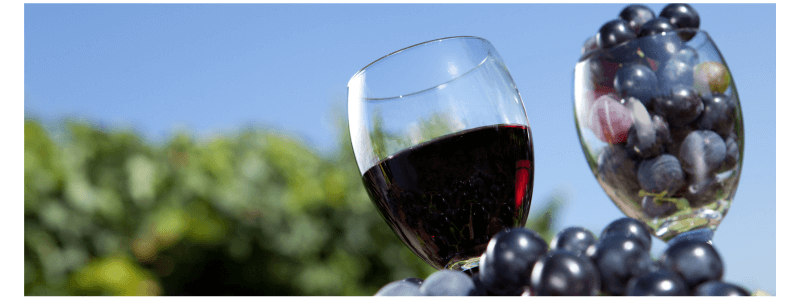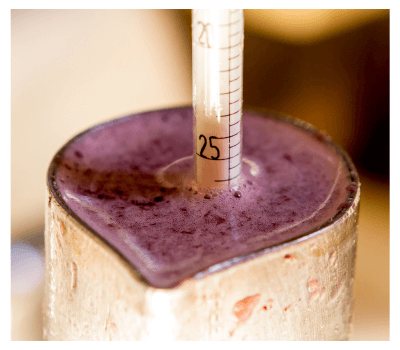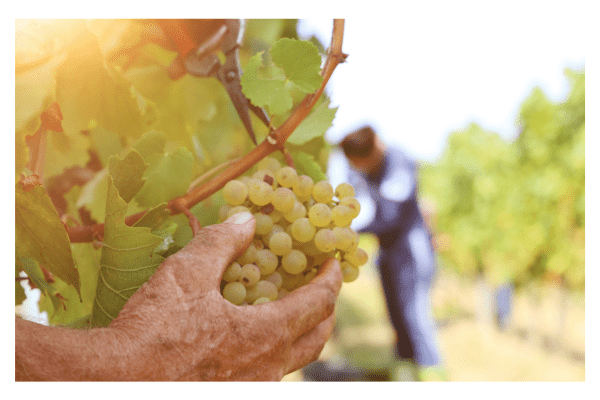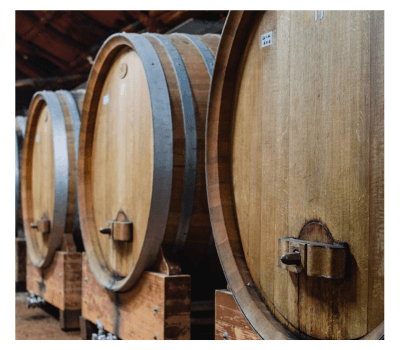No products in the basket.

In the world of winemaking, the demand for lower alcohol wines and recent duty changes on alcohol in the UK are bringing a fresh challenge to the forefront: finding ways to reduce alcohol levels in wine without compromising on the flavour and quality. As consumers increasingly seek wines with lower alcohol content, winemakers are faced with the delicate task of keeping sugar levels low in the grapes and controlling alcohol levels in the winery. In this article, we’ll delve into the intricacies of this winemaking balancing act, exploring both vineyard and winery practices and techniques that potentially allow winemakers to achieve this goal while preserving the essence of the wine.

High alcohol levels in wine have become a concern for some consumers seeking to decrease their alcohol intake whilst still wishing to enjoy a glass of their favourite tipple. In addition, recent duty changes in the UK have seen a £0.44 increase in duty on bottles of still wine with ABV between 11.5% and 14.5% to £2.67 – and to compound the issue, from 1st February 2025 duty on all wine will be calculated according to the ABV such that wines with higher alcohol will attract higher duty. I have written before about the new UK duty system and how it is good in theory but has not, in my opinion, been executed very well. A wine with a fairly average 13.5% ABV will incur duty of £2.89 from that date whilst the price of a 15% ABV wine will include a whopping £3.21 duty tariff.
Consequently high alcohol wines are now increasingly becoming a concern for winemakers. However it is not easy to produce low alcohol wines in many wine-making countries; the natural sugars in grapes ferment into alcohol during the winemaking process so in hotter climates grapes naturally have elevated sugar content. Climate change is already making it more difficult to rein in the alcohol content. As a result, wines with alcohol content exceeding 14% have become increasingly common.
But there are potentially several ways to try to lower sugar and alcohol levels.
Winemakers have a number of options in the vineyard to help them achieve reduced sugar levels in the grapes:
Theoretically one of the first decisions a winemaker makes is choosing the grape variety although in practice many winemakers inherit or purchase a vineyard with older vines that they might not want to change (read why older vines are often considered to produce better wines). If there is an option however to start afresh with new vines, there are some grape varieties that inherently produce wines with lower alcohol levels, for example, varieties like Riesling, Muscat and Melon de Bourgogne (the Muscadet grape). However reduced alcohol often means sweeter wines which are not to everyone’s taste and those varieties may not suit the vineyard’s terroir, which is usually the winemaker’s principal criteria for grape variety selection.
The location of the vineyard and even specific parts of the vineyard play a vital role in grape ripening and therefore a wine’s potential alcohol content. Cooler climate areas tend to produce grapes with lower sugar content because the growing season is longer, allowing grapes to ripen more slowly. This is why cool climate wines are generally spoken of in hallowed terms and why more commercial, entry-level wines are more likely to originate from hotter climate areas. Within a vineyard whether winemakers choosing specific plots with cooler microclimates make a huge impact on sugar levels is debateable however.

Picking grapes earlier, when grapes have lower sugar levels, might help maintain lower alcohol content but there are several other considerations. Firstly, since acidity in grapes decreases as sugar increases, picking needs to be at a time when sugar and acidity are balanced. If sugars are low and acidity too high, wine can taste quite sour and sharp. Conversely high sugars and low acidity leads to flabby, wines with higher alcohol and a shorter longevity. Acid can be added in the winery but most discerning wine consumers would prefer minimal intervention in the winemaking process. Winemakers also need to ensure grapes are ripe enough to provide their desired flavour profile. Grapes which are picked too early can lead to undesirable green, vegetal flavours in the resulting wine.
There is a direct relationship between the number of leaves surrounding the grape bunches on the vine and sugar levels in the grapes since it is the leaves that initiate the sugar through photosynthesis (and the vines that transport he sugar to the fruit). Cutting away some of the leaf coverage or canopy could therefore potentially reduce sugar levels but there are other factors like nutrients, water and sunlight to take into account and the remaining leaves are believed to compensate to a degree and so pruning is not a sure-fire method for reducing alcohol or sugar.
A process also used to desalinate seawater, this advanced technique involves passing wine through a membrane that separates the alcohol and water from other larger components. The water and alcohol are then separated from each other by distillation and the water added back into the wine to dilute it. Whilst reverse osmosis allows winemakers to control alcohol levels more precisely, it is a costly and resource-intensive process. Most importantly however, some of the things that are effectively filtered out are the tannins and some of the aroma, colour and flavour components. The taste, balance and whole character of the wine can therefore be seriously compromised.
This has been around for several years but has only caught people’s attention in recent years, as low and no alcohol wines have become more popular. It is effectively a method of fractional distillation where wine is spread over several spinning cones and alcohol can evaporate at a low temperature. The advantage of this method over reverse osmosis is that the aroma and flavour components are added back after the alcohol is reduced. The machinery required however is not cheap.
Both the above techniques are controversial and considered by many as too interventionist for fine and more natural wines

A more traditional and less-interventional approach is to manage fermentation of the wine. Warm fermentation temperatures, open-top fermenters and using specific yeast strains that produce less alcohol can help achieve lower alcohol levels more naturally. However, this method requires close monitoring and experience.
You might think that the most straightforward technique to reduce alcohol concentration is to dilute the wine with water but dilution is prohibited or at the very least frowned upon in many wine-producing countries. However, this is obviously something that we can do ourselves at home if we find a wine is too alcoholic – but, add the water slowly so as not to dilute the flavours too much.

As you can see reducing alcohol in wine is not the easiest thing to do. It’s an art that demands careful planning, precise execution, and a deep understanding of the interplay between grape varieties, vineyard conditions and winemaking processes amongst other things. It’s not a one-size-fits-all solution but rather a nuanced journey of exploration for each winemaker in each vintage. Experimentation with the different techniques is walking a very fine line between restraining alcohol and ruining the wine’s character, flavour and overall quality.
Most producers of good quality wines believe in minimal intervention in order to produce wines that reflect the terroir and the vintage in question; if they want to reduce the natural alcohol levels in wine, they are more likely to use vineyard techniques and careful management of fermentation – and they won’t compromise on aromas, flavour, acidity, complexity, texture or balance, all of which exist in harmony in the best wines. But perhaps higher duty rates like those now imposed on the UK, changing consumer preferences and climate change are going to demand more manipulation in the wine-making process going forward.
Sign up to my newsletter to receive exclusive offers and learn more about Wines With Attitude
© 2014-2024 Wines with Attitude Ltd | VAT Reg. No. 181 2419 22 | Registered in England 08918466 | Fiveways, 57-59 Hatfield Road, Potters Bar, Herts, EN6 1HS